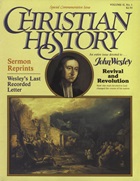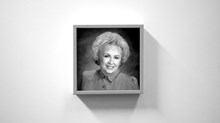In addition to his popular journals Wesley also kept personal Diaries written in a secret code. Sample entries are shown above. They have largely remained a mystery until recently when they were decoded by Dr. Richard Heitzenrater of Perkins School of Theology who accomplished the monumental task of deciphering the complex web of numbers, letters, and minute marks.
Dr. Heitzenrater told us that Wesley’s personal code “incorporates (a) two systems of shorthand, (b) a changing cipher, (c) innumerable cryptic abbreviations, (d) a series of symbols, and (e) a variety of complex number schemes.”
The diaries form a densely-packed matrix of detailed information about Wesley’s daily life—particularly his formative years at Oxford (1725–35). They give in rapid fire the events and spiritual observances and Wesley’s instantaneous responses to them. For example, minute marks indicate such “degrees of attention” at, say prayer, as dead, cold, indifferent, attentive, fervent, or zealous.
John Wesley’s use of code in his diaries was not unusual. Many of his contemporaries used shorthand and codes in letters and diaries for economy and secrecy. The discovery of the diary of Benjamin Ingham, another Oxford Methodist, helped in the breaking of Wesley’s code. And both persons’ works can be used to clarify the Oxford movement of their time.
According to Heitzenrater, the diaries do not cloak “purple passages,” but rather open up Wesley’s private life as a pious Oxford don. The diaries show that the roots of Methodism grew in Wesley’s Oxford experience. Books he read (over one hundred each year!), social action he performed, and rules for holy living as he refined them will now allow a thorough reevaluation of Wesley’s Oxford years.
Copyright © 1983 by the author or Christianity Today/Christian History magazine.
Click here for reprint information on Christian History.

Support Our Work
Subscribe to CT for less than $4.25/month





























